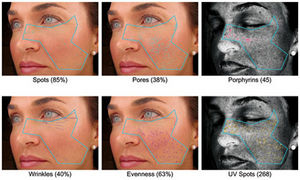November 2007 Newsletter
Youthful Aging is a Choice The individual who makes unhealthy choices may actually function and be aging biologically at the same level as someone 15-20 years older. The question is how can you be one of those people who function and age biologically at a level equivalent to someone who is many years younger than you? Presently, the degenerative diseases of aging are humankind's greatest challenge: cancer, heart attack, stroke, diabetes and Alzheimer’s disease prematurely kill and disable millions of people worldwide. In the United States alone, eliminating the number of deaths from many of these diseases would result in hundreds of billions of dollars returned to the economy, not including the savings in medical costs. Imagine how wonderful it would be if a pharmaceutical company developed a pill which could cure 60-70% of all aging-related diseases. Yet that is the percentage of cancers that are preventable in this country, according to the American Cancer Society. They estimate, for example, that 90,000 deaths due to cancer could be prevented each year in the U.S. if men and women did nothing more than maintain normal weight. Equally compelling available evidence demonstrates the possibility to prevent a similar percentage of many other aging-related diseases, including heart attacks, strokes, and diabetes. It would appear that the diseases and diminished functioning many experience with age are far more related to a lifetime of unenlightened choices than they are to the ticking of a clock. The gradual wasting away of the body over the course of decades is not a necessary or normal component of aging. Preventive-aging measures are available to postpone entry into the disability span of life and improve one’s “health expectancy.” Screening, health risk assessment and early intervention for the improvement of physiological, cognitive, emotional, and physical functioning offer possible and significant increases to one’s “health expectancy.” A comprehensive approach to preventive-aging should include equal attention to optimum nutrition and appropriate nutritional supplementation, exercise and fitness, hormone balance, healthy lifestyle changes, and stress-response management. Any preventive-aging strategy should strive to build the body’s reserve capacity, improve functional ability, and reestablish balance at the in the body and the mind. The moment to act is now. While you cannot go back and make a new start you can start today to make a new ending.
Assessing UV damage and skin health with computerized digital imaging software
The camera is effective at highlighting the contrasts between the color of skin and the spots both on the surface and subsurface of your skin. Once individuals see the damage, particularly subsurface damage that isn’t visible in the mirror, they are often more motivated to take care of their skin and protect it from the sun. What’s more, after receiving a procedure to correct sun damage, we can track the effectiveness and success of a treatment regimen with a before and after photo feature to show the level of improvement.
|
News & Promotions Bulletin BoardClaim Your Spot! Restylane and Perlane
Appointments still Available...Call Amy Now! 859-266-LIVE (5483) BIGGEST Filler up to $350 Savings (with purchase of 2 syringes) Friday, Nov. 16th-afternoon appts still available! What is Restylane?
INDIVIDUAL RESULTS MAY VARY In The NewsNew York Times best-selling authors, creator of the popular RealAge.com website, Dr. Michael Roizen, and health expert of The Oprah Winfrey Show, Dr. Mehmet Oz, offer a new approach to aging healthfully and living long and well in YOU: Staying Young. The new BiophysicalYou test is featured as "the Ultimate Workshop" in the book.
TAKE DR. OZ'S QUIZ AS SEEN ON OPRAH be FIT tip Find exercise you can love 1. Are you someone who schedules 2. Do you prefer to exercise alone? 3. Are you intimidated by the machines 4. Do you have trouble staying 5. Are you exercising to lose weight or to Shop, Select and Buy online at your convenienceyet dazzle them with the gifts they really want!
|
             
ABOUT BeMedispa | PARTNER LINKS | SERVICES | SITE MAP | CHARITIES | CMS 2.2 Designed by so2 | Developed by 3DD | Login |
|


 HEALTH with Paul L. Hester, M.D.
HEALTH with Paul L. Hester, M.D. BEAUTY with Chasity Hester, PA-C
BEAUTY with Chasity Hester, PA-C 
 BALANCE with Paul L. Hester, M.D.
BALANCE with Paul L. Hester, M.D.





